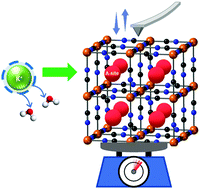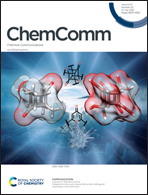Understanding electrochemical cation insertion into prussian blue from electrode deformation and mass changes†
Abstract
Alkali ion insertion into Prussian blue from aqueous electrolytes is characterized with operando AFM and EQCM, showing coupling of current with deformation and mass change rates. Stable cycling occurs only with K+, attributed to its lower hydration energy. The (de)insertion of K+ results in reversible deformation even in the open framework structure.

- This article is part of the themed collection: 2021 Emerging Investigators


 Please wait while we load your content...
Please wait while we load your content...
